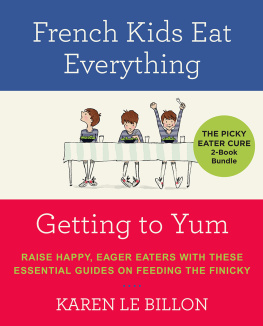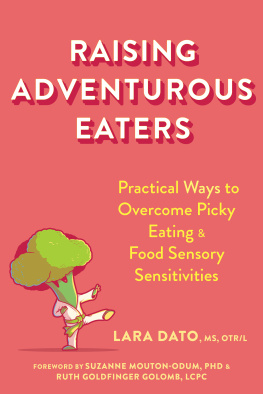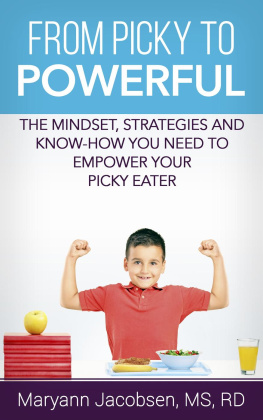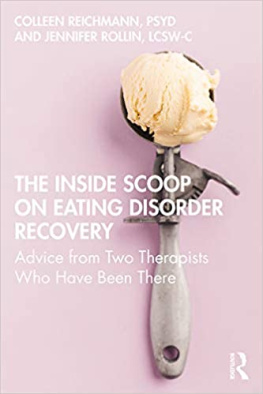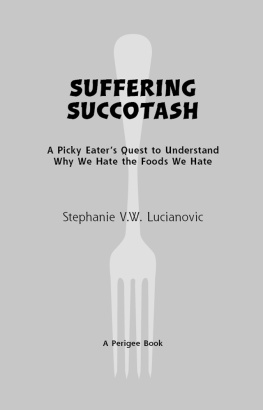Jennifer Friedman - Stories of Extreme Picky Eating
Here you can read online Jennifer Friedman - Stories of Extreme Picky Eating full text of the book (entire story) in english for free. Download pdf and epub, get meaning, cover and reviews about this ebook. year: 2020, publisher: Page Street Publishing, genre: Children. Description of the work, (preface) as well as reviews are available. Best literature library LitArk.com created for fans of good reading and offers a wide selection of genres:
Romance novel
Science fiction
Adventure
Detective
Science
History
Home and family
Prose
Art
Politics
Computer
Non-fiction
Religion
Business
Children
Humor
Choose a favorite category and find really read worthwhile books. Enjoy immersion in the world of imagination, feel the emotions of the characters or learn something new for yourself, make an fascinating discovery.

- Book:Stories of Extreme Picky Eating
- Author:
- Publisher:Page Street Publishing
- Genre:
- Year:2020
- Rating:5 / 5
- Favourites:Add to favourites
- Your mark:
- 100
- 1
- 2
- 3
- 4
- 5
Stories of Extreme Picky Eating: summary, description and annotation
We offer to read an annotation, description, summary or preface (depends on what the author of the book "Stories of Extreme Picky Eating" wrote himself). If you haven't found the necessary information about the book — write in the comments, we will try to find it.
Stories of Extreme Picky Eating — read online for free the complete book (whole text) full work
Below is the text of the book, divided by pages. System saving the place of the last page read, allows you to conveniently read the book "Stories of Extreme Picky Eating" online for free, without having to search again every time where you left off. Put a bookmark, and you can go to the page where you finished reading at any time.
Font size:
Interval:
Bookmark:
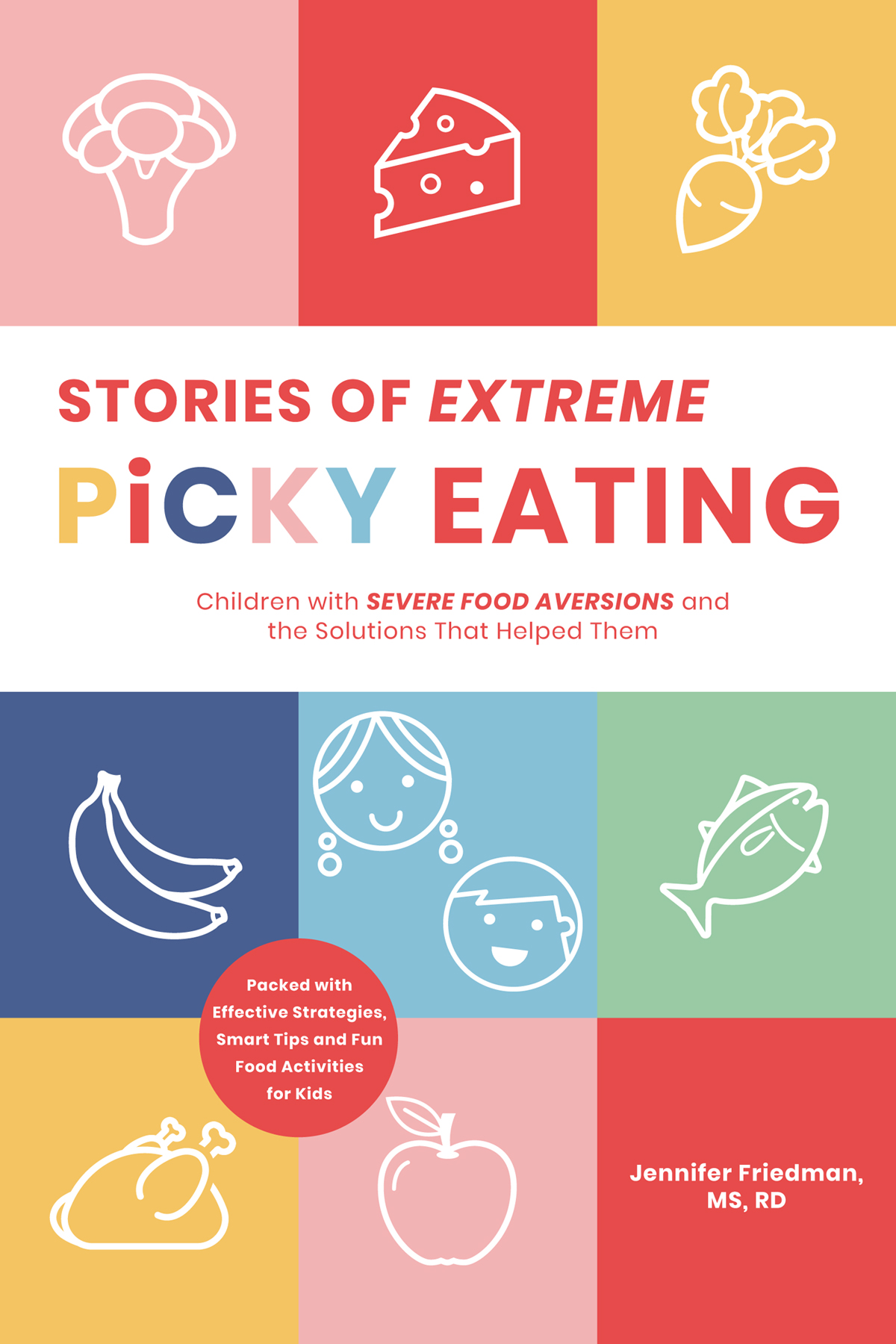
the Solutions that Helped Them
MS, RD

The author and publisher have provided this e-book to you for your personal use only. You may not make this e-book publicly available in any way. Copyright infringement is against the law. If you believe the copy of this e-book you are reading infringes on the authors copyright, please notify the publisher at: http://us.macmillanusa.com/piracy.
For my family, who taught me the value and joys of convening around the family table.

How can we raise kids who grow up to become adults who eat well? This was one of the questions that drove my interest in nutrition ten years ago. The United States was facing what was dubbed the obesity epidemic, and, as an unjaded, energetic twenty-something, I felt maybe we could turn the tide if we provided children with the right resources before they formed habits that would later be hard to break.
To this end, while earning my graduate degree, I spent time teaching nutrition and cooking lessons in New York City elementary classrooms. Interacting with food alongside children in the schools was a transformative experience for me. Very quickly I noticed that engaging with and talking about food came easily for the majority of the children I taught. Opportunity seemed to be the only obstacle standing between them and their willingness to sample a rainbow of fruits and vegetables or scoop up a dollop of homemade carrot hummus with a red pepper slice they cut themselves. But I also met another noticeable, yet smaller, group of kids who simply couldnt engage on that level. They were hesitant to touch, taste and even talk about the food we encountered.
That was the first time that I realized that eating is not something that we grow up intuitively knowing how to do. It was the first time I realized that there are some kids who experience genuine impediments to executing an activity that feels natural to so many of us and is so important to our well-being.
This reality reappeared in my work years later, when I began a private practice for autistic children. Kids on the spectrum are notorious for having poor diets, and I was aiming to help parents optimize diet to manage adverse symptoms and behavior. Yet when I actually sat down with families, I kept coming across one obstacle over and over: My child wont eat that; he cant even sit at the table with us. She gags when I just talk about foods she doesnt eat. How do I possibly introduce healthy foods to my child who only eats a peanut butter sandwich cut into four perfect squares? The realization I had while teaching nutrition had resurfaced, and this time it wasnt only interfering with school participation. It was a problem with profound ramifications.
So many of the children I met were facing genuine hurdles to eating not only a wholesome diet, but food in general. It became clear that I couldnt talk about improving nutrition without first resolving the issues that were impeding these children from having a comfortable relationship with food. Rather than abandon my mission, I morphed the goal from optimizing diet to breaking down the barriers that prevented kids from doing so. First, wed address the eating problems, then wed improve diet.
As I settled on this approach, the range of children I met began to grow. Extreme picky eating isnt unique to spectrum disorders, and it isnt a rare ailment. I now meet with a diverse population of children who have one thing in common: their inability to eat is interfering with their well-being and the well-being of their families. While the details of each childs eating difficulties are unique, the issues that extreme picky eaters face are universal. Therefore, the advice and strategies that I share apply to most kids who struggle with eating.
In the following pages, you will find a series of case studies interwoven with insight from my training, research and professional experiences. The principles of my approach to managing eating aversions are rooted primarily in Ellyn Satters Division of Responsibility for Feeding; Cheri Fraker and Dr. Mark Fishbeins food chaining; and the value of hands-on sensory experiences, which is informed by several strategies, including Dr. Kay Toomeys Sequential Oral Sensory Approach to Feeding. I hope to shed light on how these practices can be applied and adapted to a variety of issues that manifest as a picky diet and give clarity to the hiccups and triumphs that arise as families adapt their feeding routines and work to transform their childs relationship with food.
The children that youll meet in Part 1 represent a tiny fraction of the many flavors of eating struggles that children can face. I wanted to demonstrate the types of cases that I see most frequently and to reveal the serious impact that any eating anomaly can have on a child and their family. I also wanted to demonstrate that though on the surface it may not always seem like these struggles are debilitating, a childs inability to eat freely is always a tremendous stressor.
Even though were meeting seven unique children with seven unique problems, you will see three themes repeated: environment, repeated exposure and hands-on exploration. While I do not advocate a one-size-fits-all approach, I do believe addressing these pillars provides children with the support they need to expand their diets. To that end, in Part 2 of this book, I share step-by-step strategies based on these themes that you can use to create your own approach to conquering picky eating at home. Additionally, at the conclusion of each case study chapter, youll find instructions for a hands-on activity that was especially effective with that particular case. I use these regularly with clients in my personal practice, and I recommend them as vehicles for bringing some levity into what can be a challenging process.
I dont claim or seek to cure the type of eating difficulties that we see in this book, just as I dont envision any extreme picky eater ever eating all foods. Instead, I hope they can learn to eat foods from all food groups and do so comfortably. While I hope for children who struggle with eating to grow into adults who eat well, my priority is that they discover the pleasures of eating and sharing meals with others while enjoying the empowerment that comes with being able to feed their bodies what they need.
I hope you enjoy getting to know families that are similar to yours and share your frustrations, hopes, struggles and joys. Just as the approaches I use have helped them, I hope that the strategies and activities you encounter in these pages help revive your own picky eaters relationship with food.
A quick note: I use the word picky throughout this book to describe the type of eating behavior that we encounter. You will also see the terms problem feeder, extreme picky eater, selective and particular. We lack a term that adequately describes children who are not simply temperamental but who also do not have a clear diagnosable eating-related dysfunction. I dont feel that picky accurately describes the complexity of the struggles that the children featured in this book experience, but I settled on this word because it communicates something relatable about the diets and behaviors of the children you are about to meet.
Font size:
Interval:
Bookmark:
Similar books «Stories of Extreme Picky Eating»
Look at similar books to Stories of Extreme Picky Eating. We have selected literature similar in name and meaning in the hope of providing readers with more options to find new, interesting, not yet read works.
Discussion, reviews of the book Stories of Extreme Picky Eating and just readers' own opinions. Leave your comments, write what you think about the work, its meaning or the main characters. Specify what exactly you liked and what you didn't like, and why you think so.

